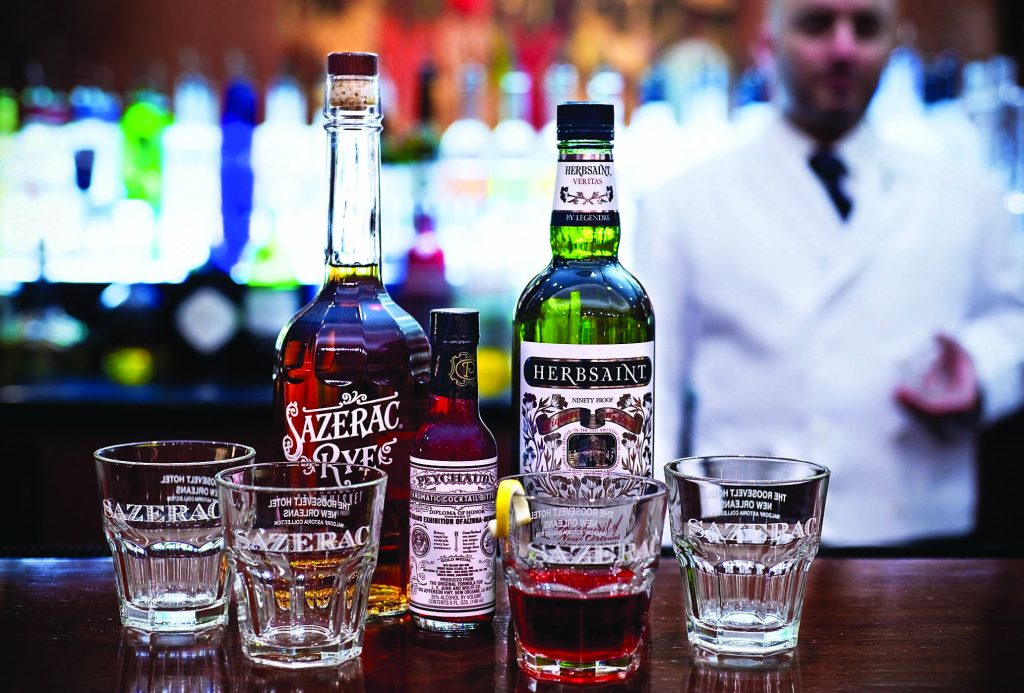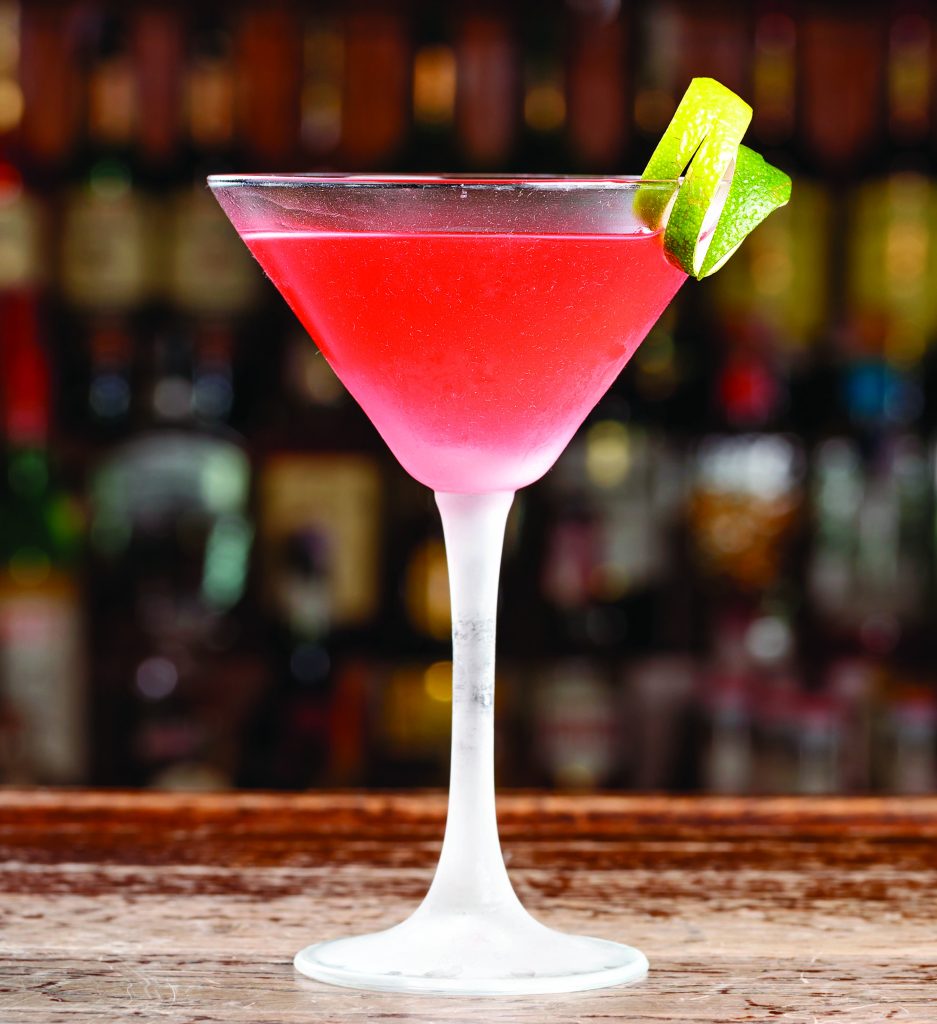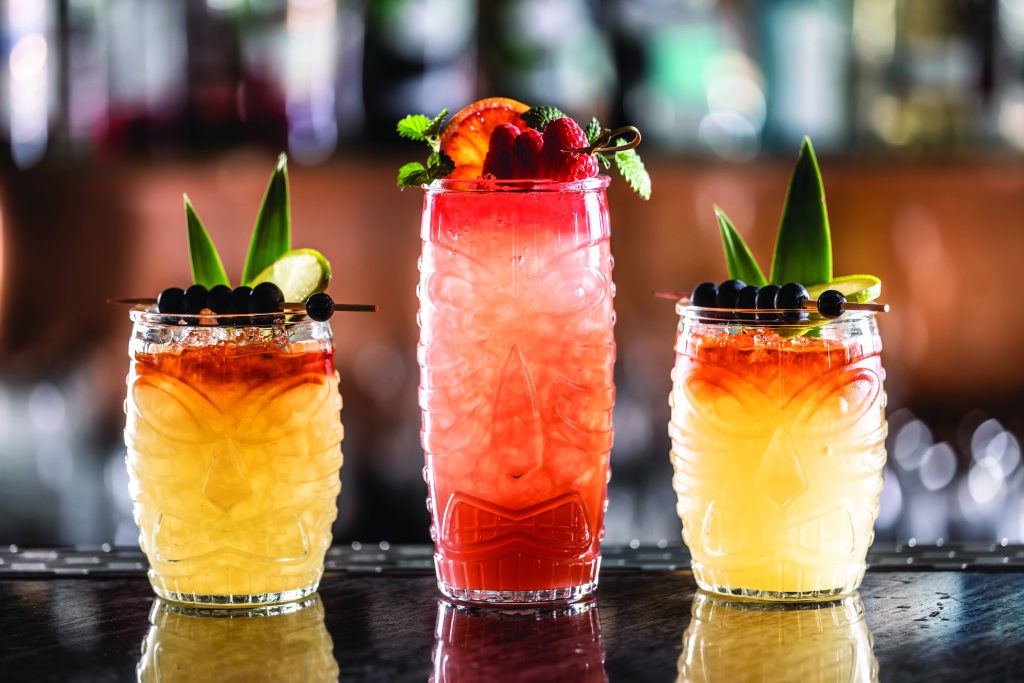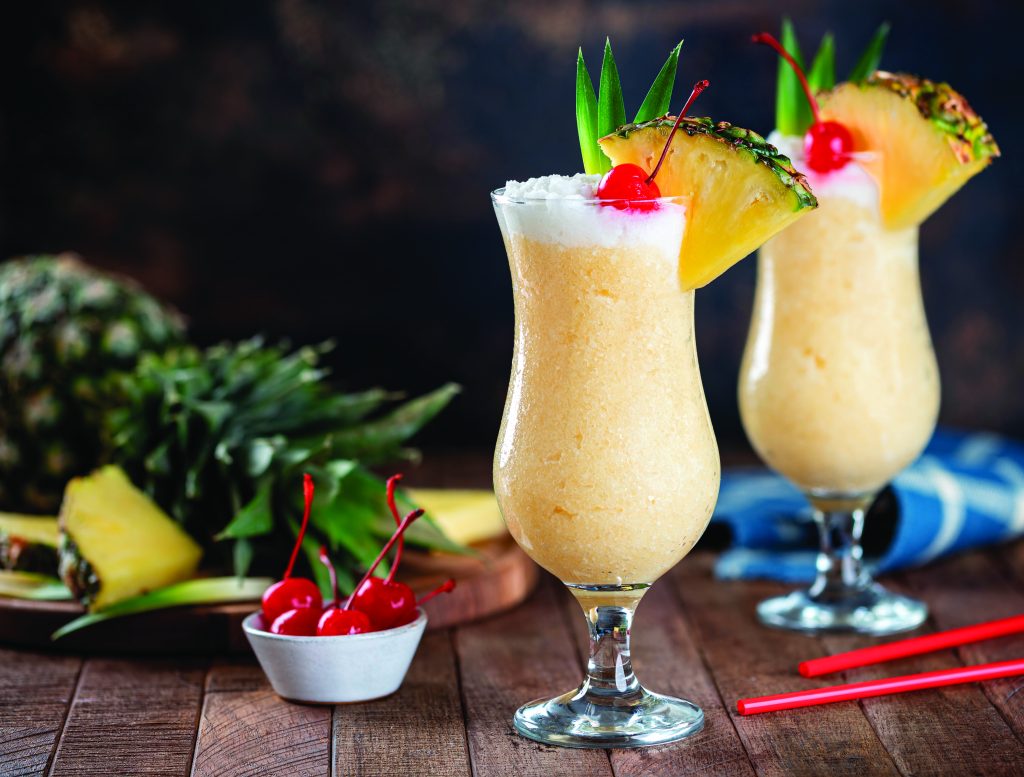Founder and president of the Museum of Food and Drink (55 Water Street, 2nd Floor. Tel. 201-371-3550. mofad.org) in Brooklyn, NY, Dave Arnold’s boundless pursuit of knowledge has taken him around the globe.
Author of Liquid Intelligence: The Art & Science of the Perfect Cocktail, the renowned culinary thought leader also created and directed the pioneering Department of Culinary Technology at NYC’s esteemed former French Culinary Institute (now the International Culinary Center), and he runs his own NYC-based food and drink research lab, Booker and Dax.
Regarding culinary origin stories, Arnold believes that location matters most. “There is almost always a bone of contention over who invented what, where, and when,” he said. “Knowing the creators is important, of course, but for me, the place of origin is more significant. Most places have local food and drink that you cannot get at home or elsewhere. When you plan travel based on the known or purported home of a given recipe, you feel like you are really going somewhere.”
Whether seeking out the original or variations of a concept in its birthplace, discovering its interpretations around the world, or religiously chasing the best version of a favorite bite or drink, it’s a journey that comes with rich connections to a place and its chefs, bartenders, servers, and locals. And above all, fun, pleasure, learning, and making memories are the essential ingredients of travel. Kicking off our culinary origin series, the cocktail galaxy invites endless exploration.
The 23rd annual Tales of the Cocktail conference returns to New Orleans this July with the theme of “Evolve,” focused on the cocktail industry’s ongoing transformation and development. Driven by experimentation, adaptation, innovation, oral histories, rumors, and myths, evolution defines cocktail history.
Crescent City’s own official cocktail, the Sazerac, is a classic example. As the story goes, Haitian émigré Antoine Peychaud invented the drink at his New Orleans apothecary in 1838. Splashing his name sake bitters into Sazerac-de-Forge et fils brandy, the enterprising Creole served his creation in an egg cup, or coquetier (pronounced “cocktay”), which reputedly slurred into “cocktail.”

Sazerac Bar, Roosevelt Hotel (Photo by Hilton)
Earlier “cocktail” references include an 1806 New York newspaper article describing “a stimulating liquor composed of spirits of any kind, sugar, water, and bitters.” First recorded that same year, the Old Fashioned, a concoction of spirit, sugar, bitters, and water, has English antecedents as far back as 1690. Regardless, Peychaud’s egg cup reigns as one of the world’s oldest and most classic cocktails.
Absinthe was originally in the Sazerac mix. After the “Green Fairy” was banned in 1912, the drink settled into its classic construction of cognac or rye whiskey with bitters and sugar, although Vieux Carré, Pernod, and other topline absinthes are still incorporated today.
Local Sazerac sanctuaries include the 1930’s Art Deco-style Sazerac Bar inside Roosevelt Hotel New Orleans (130 Roosevelt Way. Tel. 504-648-1200. therooseveltneworleans.com).
Now a Waldorf Astoria property, the historic hotel hosted Queen’s infamously debauched Halloween launch party for Jazz in 1978. Freddie Mercury personally chose the many adventurous locals who “enlivened” the Fellini-esque bacchanal. Peychaud’s (727 Toulouse Street. Tel. 504-332-2200. thecelestinenola.com/peychauds) is the inventor’s former French Quarter home-turned-bar inside the boutique Celestine Hotel.
The gay bars of Provincetown play a pivotal role in the Cosmopolitan’s evolution as a signature cocktail of the modern age. Precursors started with the century-old vodka gimlet with citrus and sugar, and its successor the Kamikaze, a vodka-based margarita with Cointreau triple sec and lime juice. Purported name origins include the “Cosmopolitan Daisy” described in a 1934 recipe book. In the mid-80’s, Provincetown bar tenders added cranberry juice, then just emerging on the New England bar scene. Among the community members touting the drink in their travels were friends of Cleveland bartender John Caine. “It was really the connection through the gay community that brought the Cosmo to Ohio in general,” Caine shared recently with Cleveland.com.

Cosmopolitan (Photo by Shyripa Alexandr)
In 1987, he introduced the cocktail, then composed of rail vodka, Rose’s lime and grenadine, to San Francisco at a former supper club in the Leather and LGBTQ+ cultural district. Today, he serves the Sugarbutt, or the “famous John Caine Cosmopolitan with Hetchy Vodka, Orange Liqueur, Lime, Cranberry” at his authentic waterfront Hi-Dive (Pier 28 1/2. Tel. 415-977- 0170. hidivesf.com) bar in San Francisco. Returning to the 80’s, the Cosmo then traveled to NYC, where in 1988, Toby Cecchini, bartender at iconic Tribeca bistro The Odeon (145 West Broadway. Tel. 212-233-0507. theodeonrestaurant.com), reconstructed the drink and made it his own, mixing two-parts lemon vodka with one part each Cointreau, fresh lime juice, and cranberry juice.
Featured on the cover of Jay McInerney’s novel Bright Lights, Big City and former late-night playground for the likes of Madonna, Mick Jagger, and John Belushi, The Odeon’s enduring in-crowd appeal includes the original Odeon Cosmopolitan. In 1999, Sarah Jessica Parker, as Carrie Bradshaw, forever popularized the Cosmo on Sex and the City.
True to its origins as a sour cocktail, a proper Cosmo should be tart and subtly colored. Too sweet or too pink and it’s off the mark.
In 2013, a decade after writing his mem oir Cosmopolitan: A Bartender’s Life, Cecchini and restaurateur Joel Tompkins revived The Long Island Bar (110 Atlantic Ave., Brooklyn. Tel. 718625-8908. thelongislandbar.com). Cocktails at this 1951 time capsule and industry favorite include the Long Island Gimlet of gin, lime-ginger cordial, and fresh lime juice.
James Bond’s sex appeal is as inebriating as his signature cocktail, the Martini. “Women wanted to be with him. Men wanted to be like him.” Variously attributed to Raymond Chandler, Ian Fleming, and Sean Connery.
Bond author Fleming coined his creation’s “shaken not stirred” catchphrase after the vodka martini at his favorite oasis, Dukes Bar (35 St James’s Place, London Tel. +44-207-491-4840. dukeshotel.com) inside the ritzy Dukes London hotel. The boutique hotel is closed for renovations until fall 2025, but the bar, helmed by legendary barman Alessandro Palazzi, remains open for Bond-inspired classics like The Vesper, after Casino Royale’s Vesper Lynd.
This definitive Martini consists of two parts gin to one-part dry vermouth garnished with an olive or lemon twist.
Other popular martini variations run the gamut from the Chocolate and Espresso Martini to the Appletini and Lemon Drop Martini. The Odeon serves Ginger and Cucumber Martinis.
The most-cited suspects of the origin of the Martini include Martini & Rossi, the pioneering Italian vermouth maker founded outside Turin in 1863 by entrepreneur Alessandro Martini and herbalist Luigi Rossi.
Commemorated locally with a plaque, Martinez, California bartender Julio Richelieu made a “Martinez Special” of gin, vermouth, and orange bitters over crushed ice with an olive for a miner bearing gold in 1874.

Mai Tai Cocktails (Photo by Marain Weyo)
Around 1911, bartender Martini di Arma di Taggia concocted a gin, vermouth and orange bitters cocktail for John D. Rockefeller at NYC’s Knickerbocker Hotel (6 Times Square. Tel. 212-204- 4980. theknickerbocker.com). Reborn in 2015, the “Knick” is a sure bet for Martinis prepared tableside at the fourth-floor Martini Lounge.
At Musso & Frank Grill (6667 Hollywood Blvd. Tel. 323-467-7788. mussoandfrank.com), L.A.’s oldest restaurant and legendary Hollywood haunt from 1919, the chilled Martini of gin or vodka with in-house cured olives (no vermouth) is perfection in a petite glass, stirred but never shaken.
Remember Trader Vic’s? Not Texas’ first lesbian bar, that debuted in Dallas in 1962, but the seminal Tiki chain renowned for Polynesian décor and rocket-fueled cocktails that’s been revived with an expanding multinational portfolio (tradervicsatl.com).
San Francisco restaurateur Victor Bergeron Jr.’s visionary concept now has his granddaughter Eve serving as company historian and marketer, and the revival aims to recapture its kitschy glory. In 1934, Bergeron opened Hinky Dinks, a tiny beer parlor and luncheonette in nearby Oakland. That same year, Donn Beach launched Tiki culture with his first Don the Beachcomber bar, in Hollywood. After visiting his friendly rival, Bergeron renamed his joint Trader Vic’s in 1938, upgrading to island-style décor and refocusing his menu on potent rum cocktails and pseudo‐Chinese food.
In 1944, he created the Mai Tai, mixing light Martinique rum and dark Jamaican rum with orange Curaçao, orgeat and rock candy syrups, and lime juice. Meaning “good” in Tahitian, the cocktail remains a Tiki icon.
Bergeron later expanded to 21 splashy U.S. and international locations, creating a multi million-dollar restaurant and product empire. Famous flagships included the Beverly Hilton in Los Angeles, New York’s Plaza Hotel, and London’s Park Lane Hilton.

Pina Coladas (Photo by Charels Brutalg)
Offered on the current menu along with Pina Coladas the Mai Tai and other favorites, the Scorpion, Bergeron’s “festive concoction of Rums, Fruit Juices, and Brandy, with a whisper of Almond, bedecked with Gardenias, and served with long straws” is a four-person bowlful of liquid dynamite.
Speaking of rum, Captain (Henry) Morgan was a real-life swashbuckling Welsh privateer who raided Spanish colonies in the 17th century before being knighted by Charles II and becoming lieu tenant-governor of Jamaica. In 1944, Seagram’s named their Jamaican rum distillery after him.

Ramon Monchito
Marrero, Creator
of the Piña Colada (Photo by Hilton)
Another Caribbean destination, Puerto Rico, is the birthplace of an equally iconic rum cocktail. Opened in 1949, the Caribe Hilton (1 San Geronimo St., San Juan. Tel. 787-721-0303. caribehilton.com) was the island’s first modern hotel. The ocean-facing property gained instant fame in 1950 by hosting honeymooning newlyweds Elizabeth Taylor and Conrad Hilton Jr. Four years later, bartender Ramón “Monchito” Marrero Pérez boosted the Caribe’s legend by creating the Piña Colada, the creamy tropical concoction that became Puerto Rico’s national drink in 1978. Today, guests enjoy the Original Piña Colada of Don Q Gold rum, Coco López cream of coconut, cream, and pineapple juice.
I always loved the ingenious story of late spirits importer Sidney Frank. Before the mid-80’s, the herbal alcoholic drink Jägermeister, favored in its birthplace of Germany as leberkleister (liver glue) for its purported medicinal properties, was relatively unknown in the U.S mainstream market. Then, Frank who had secured rights to the digestif in 1973, had the bright idea to promote Jäger as a party drink to American college kids. As the shots went down on campuses nationwide, sales skyrocketed.
In 1997, the entrepreneur went one better by marketing Grey Goose vodka, a concept he created from thin air, at a price point nearly double that of Absolut, the leading brand of the time. Dubbed the “Cocktail Creationist” by New York magazine, Frank sold his goosed-up French vodka to Bacardi for $2 billion in 2004.
For this article, I did not even talk about two of my favorite cocktails, the Manhattan and the Negroni. And while Tequila’s mythological beginnings could fill a book, food origin stories could fill a library. Stay thirsty and hungry for more tasty tales in the future.
You may also enjoy
Celebrate National Martini Day with this Recipe from Izzy’s in San Francisco
Celebrate National Martini Day With This Recipe From Izzy’s in San Francisco


